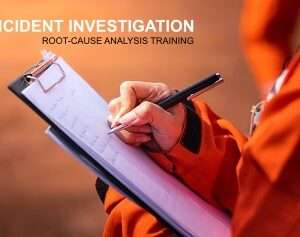Risk Registry System
Description
A risk registry system is a structured and organized approach to identifying, assessing, managing, and monitoring risks within an organization or project. It serves as a centralized repository of information related to risks, allowing for better risk management and decision-making. Here’s an overview of how a risk registry system typically works:
1. Risk Identification:
- The first step in managing risks is identifying them. This involves gathering information about potential risks that could affect the organization or project. Risks can come from various sources, including internal processes, external factors, and environmental changes.
2. Risk Assessment:
- Once risks are identified, they need to be assessed to determine their potential impact and likelihood. This involves assigning risk ratings or scores based on criteria such as severity, probability, and detectability.
3. Risk Mitigation and Response Planning:
- For each identified risk, a mitigation and response plan should be developed. This plan outlines how the organization will reduce the impact or likelihood of the risk or how it will respond if the risk materializes.
4. Risk Ownership and Accountability:
- Risks should be assigned to specific individuals or teams within the organization who are responsible for monitoring and managing them. This ensures that someone is accountable for each risk.
5. Risk Monitoring and Reporting:
- Regular monitoring of risks is essential to track their status and make informed decisions. The risk registry system should provide tools for tracking risk mitigation efforts and updating risk assessments as necessary.
6. Communication and Reporting:
- Effective communication about risks is crucial. The system should facilitate the sharing of risk information with relevant stakeholders, including executives, project teams, and other interested parties.
7. Documentation and Documentation Retention:
- All information related to risks, assessments, mitigation plans, and actions taken should be documented and retained in the risk registry system for future reference and audit purposes.
8. Integration with Other Systems:
- The risk registry system may need to integrate with other organizational systems, such as project management software, to ensure that risk management is seamlessly incorporated into broader business processes.
9. Risk Review and Evaluation:
- Regular reviews and evaluations of the risk registry system are necessary to assess its effectiveness and identify areas for improvement.
10. Training and User Support: – Users of the risk registry system should receive training on how to use the system effectively. Ongoing user support should also be available to address any issues or questions.
Benefits of a Risk Registry System:
- Improved visibility and awareness of risks.
- Enhanced decision-making based on data-driven insights.
- Better allocation of resources to high-priority risks.
- Increased accountability and responsibility for risk management.
- Streamlined communication and reporting processes.
Implementing a robust risk registry system can help organizations proactively identify and manage risks, ultimately reducing the negative impacts of unexpected events and uncertainties.
Additional information
| Payment Options | Promo Price, Regular Price |
|---|---|
| Package Option | eCertificate Only, w/ Hard Copy |







